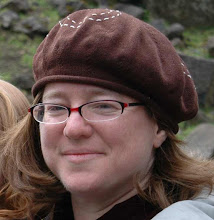 When Isaac Lopez was buried in 1762, he joined the remains of many of his extended kin and other members of the Yeshuat Israel [Salvation of Israel] congregation. The Hevra kadisha (Burial Society) of Newport washed his body and prepared it for burial. The leader of the burial society then led the men in seven circuits around the body (Emmanuel PRECIOUS STONES 81). These circuits not only embedded the dead into the memory of the community, but also helped transition the deceased from the world of the living to the world to come.In Judaism, seven is a holy number symbolizing God, completion, and the covenant.One sign of this covenant was separation.
When Isaac Lopez was buried in 1762, he joined the remains of many of his extended kin and other members of the Yeshuat Israel [Salvation of Israel] congregation. The Hevra kadisha (Burial Society) of Newport washed his body and prepared it for burial. The leader of the burial society then led the men in seven circuits around the body (Emmanuel PRECIOUS STONES 81). These circuits not only embedded the dead into the memory of the community, but also helped transition the deceased from the world of the living to the world to come.In Judaism, seven is a holy number symbolizing God, completion, and the covenant.One sign of this covenant was separation.
Jewish law requires that Jews be buried separately from their gentile neighbors, and in 1677 the Jews of Newport purchased and established a burial ground at the edge of town on the corner of what is now Kay Street and Bellevue Avenue (Gradwohl 20). The cemetery was far from both the town’s Protestant cemeteries, and the houses and businesses of most Jewish residents. After being prepared for internment, Isaac’s body was brought here and buried. A year later a gravestone was erected and “unveiled.” Like the seven circuits made by mourners around the coffins of the dead, the gravestone laid over the tomb had a redemptive quality: it, like other stones in the cemetery, embedded the deceased in the Jewish community of Newport for all eternity, but also insisted upon the interrelatedness of Spanish, Portuguese, Jewish, and Colonial worlds of Isaac’s family. Like many of the Jews buried in the Touro cemetery, Isaac’s father Moses (1706-1767) was a converso or “crypto-Jew”; that is, he was a descendent of Jews who had been forced to convert to Christianity and who had for centuries practiced Catholicism in public, and a form of Judaism in private.
Like the seven circuits made by mourners around the coffins of the dead, the gravestone laid over the tomb had a redemptive quality: it, like other stones in the cemetery, embedded the deceased in the Jewish community of Newport for all eternity, but also insisted upon the interrelatedness of Spanish, Portuguese, Jewish, and Colonial worlds of Isaac’s family. Like many of the Jews buried in the Touro cemetery, Isaac’s father Moses (1706-1767) was a converso or “crypto-Jew”; that is, he was a descendent of Jews who had been forced to convert to Christianity and who had for centuries practiced Catholicism in public, and a form of Judaism in private.
Moses Lopez had come to Newport to escape a late wave of the inquisition in Portugal after his New Christian relatives denounced him for “Judaizing.” Moses was the older half-brother of Aaron Lopez, one of Newport’s most famous merchants. When Moses came to the Americas, he gave up his Portuguese Christian name (José Lopez Ramos) for a Hebrew one (Moseh) and its English equivalent (Moses). His wife was his first cousin Rebecca Rodriguez Rivera (? -1793), whose father Abraham Rodriguez Rivera (? -1765) had escaped the Spanish inquisition and fled to England and later Newport (Rodrigues Pereira 568, 579). Moses was naturalized in New York in 1740/41 and most (or all) of his children were born in Newport (Stern 175). Several of Moses and Rebecca’s children died young, but only the stones of Isaac (1762) and Jacob (1763) remain.
Acknowledgments:
This entry is an excerpt from a conference presentation given at the American Studies Association Conference in 2007. Research was funded by NEH and a Ruby Grant.
Tuesday, February 16, 2010
Grave Matters: Converso Funerary Art
Subscribe to:
Post Comments (Atom)



0 comments:
Post a Comment